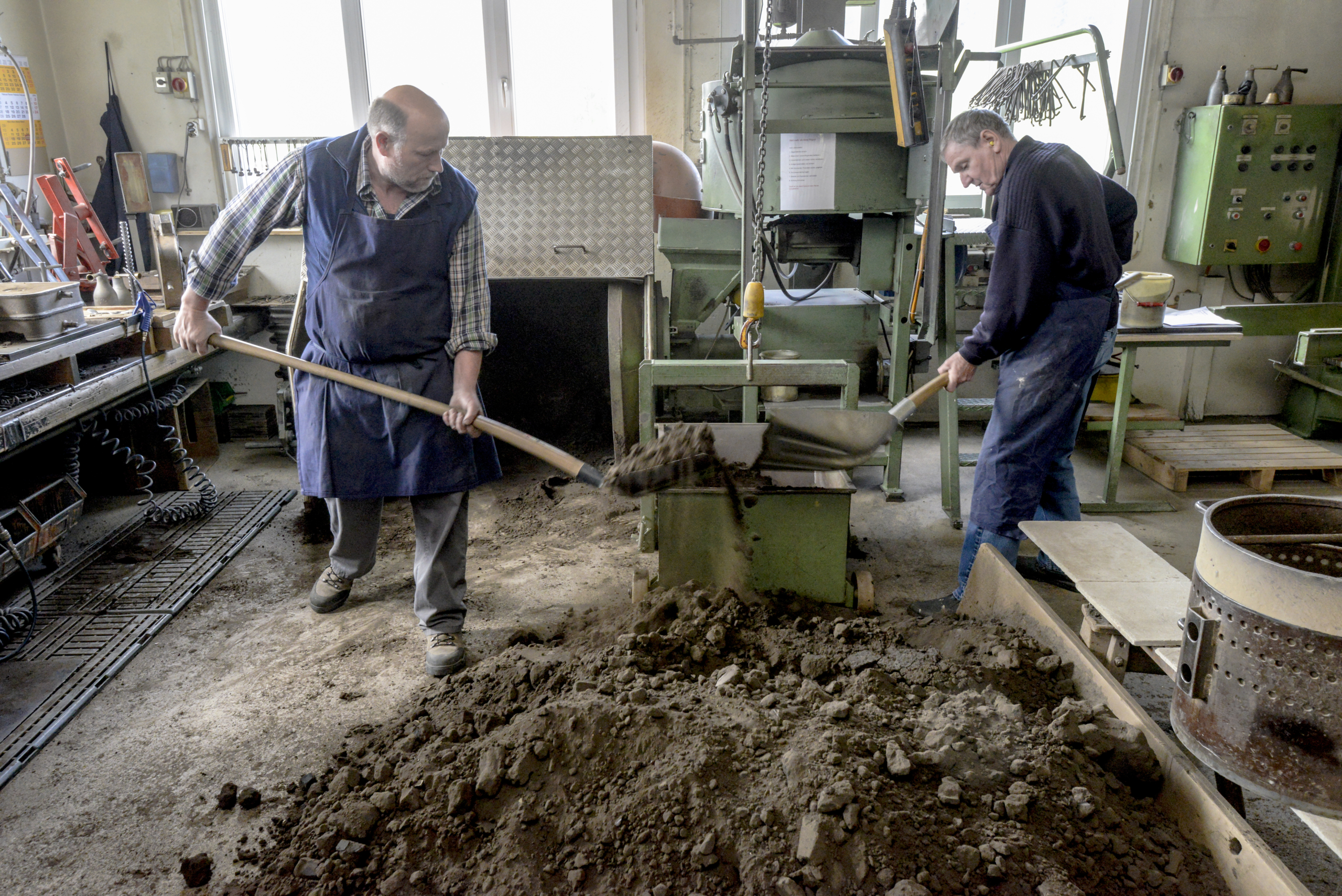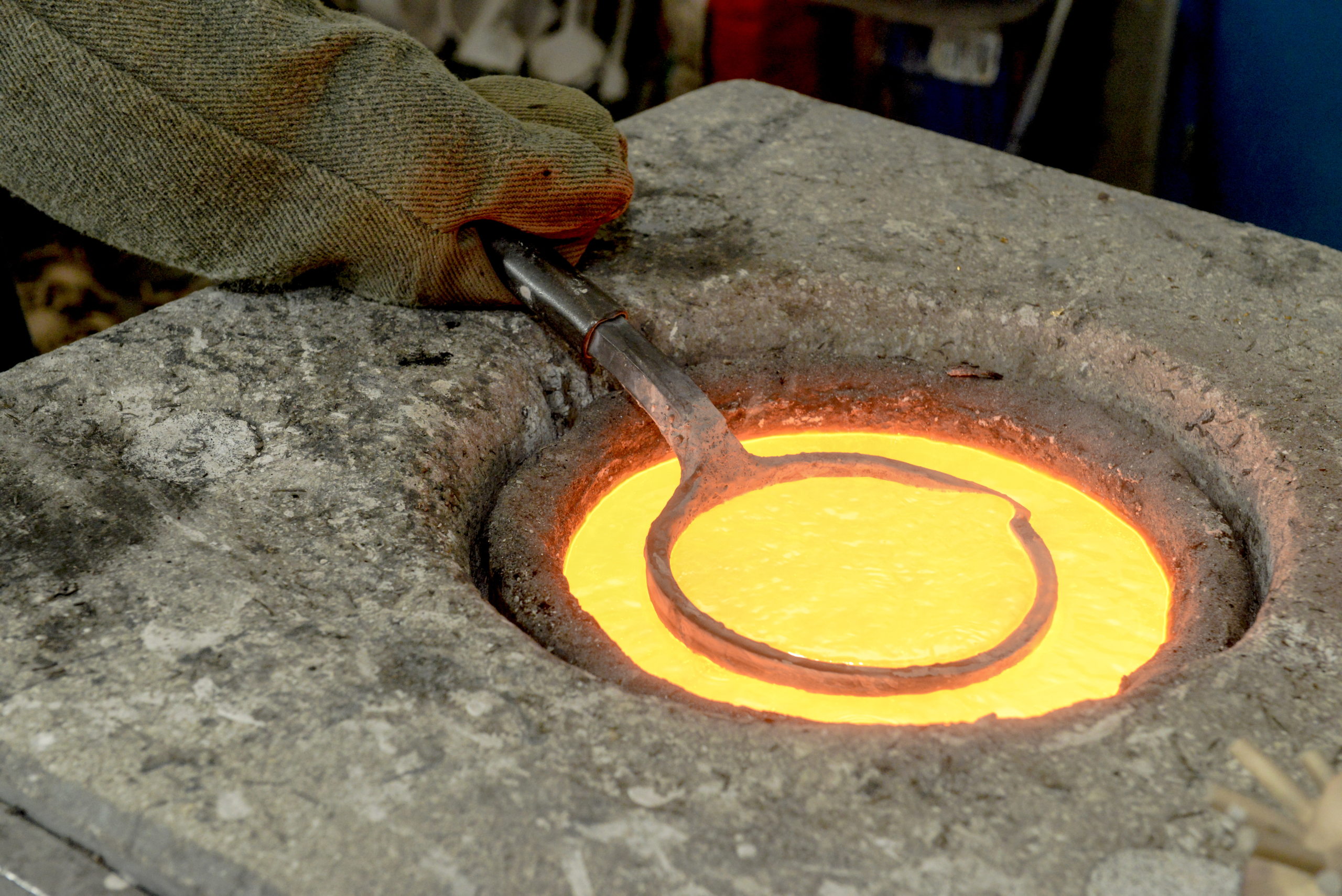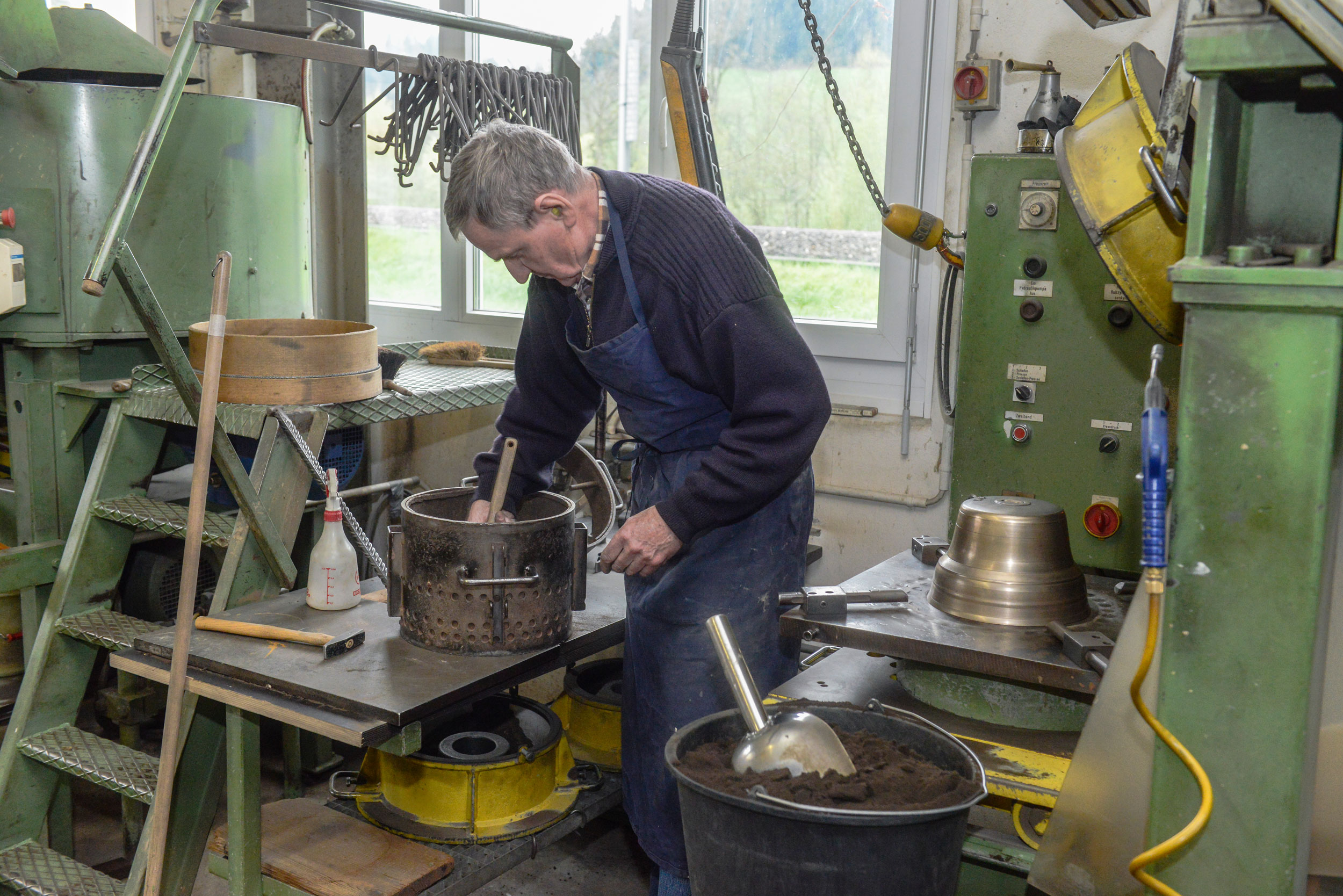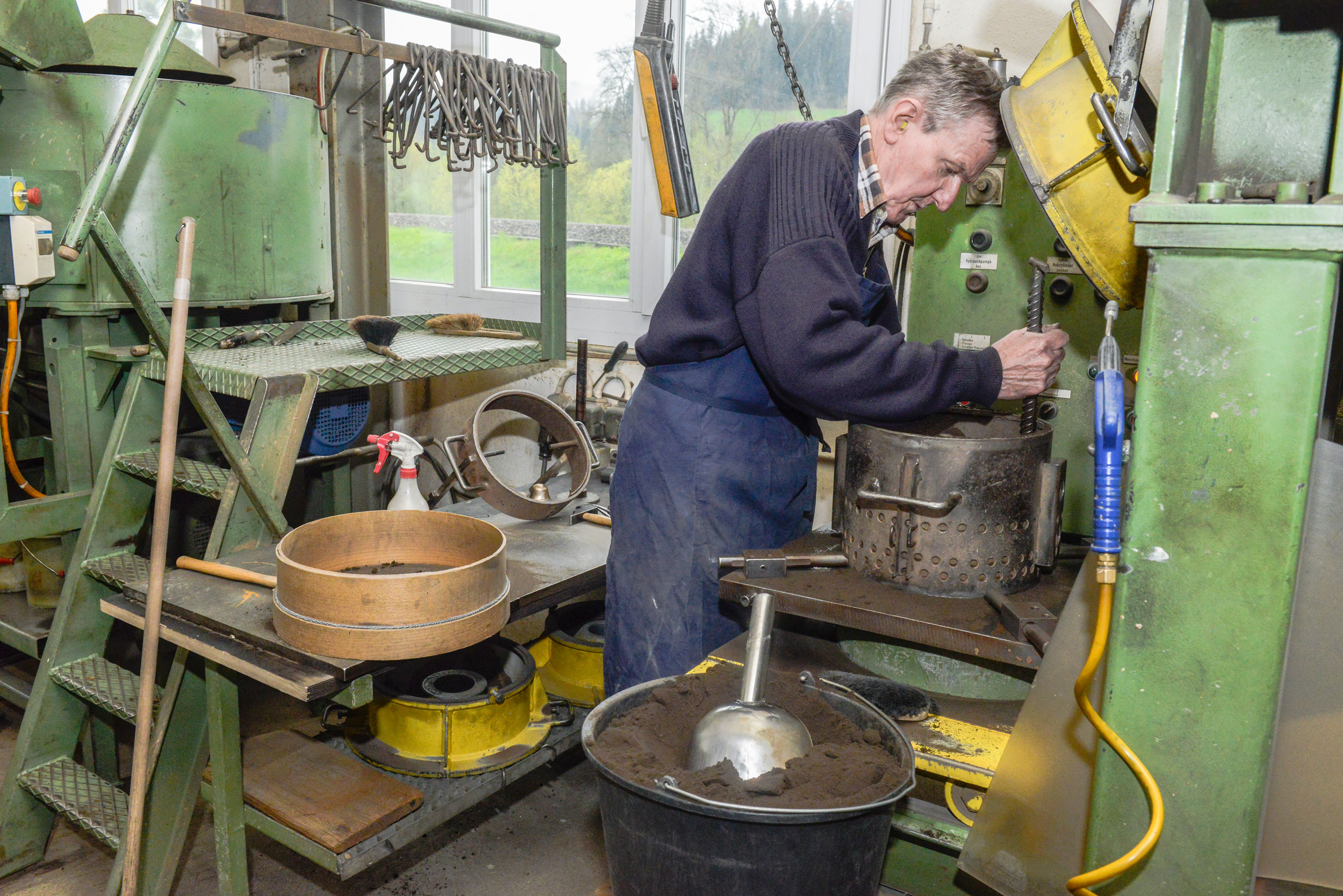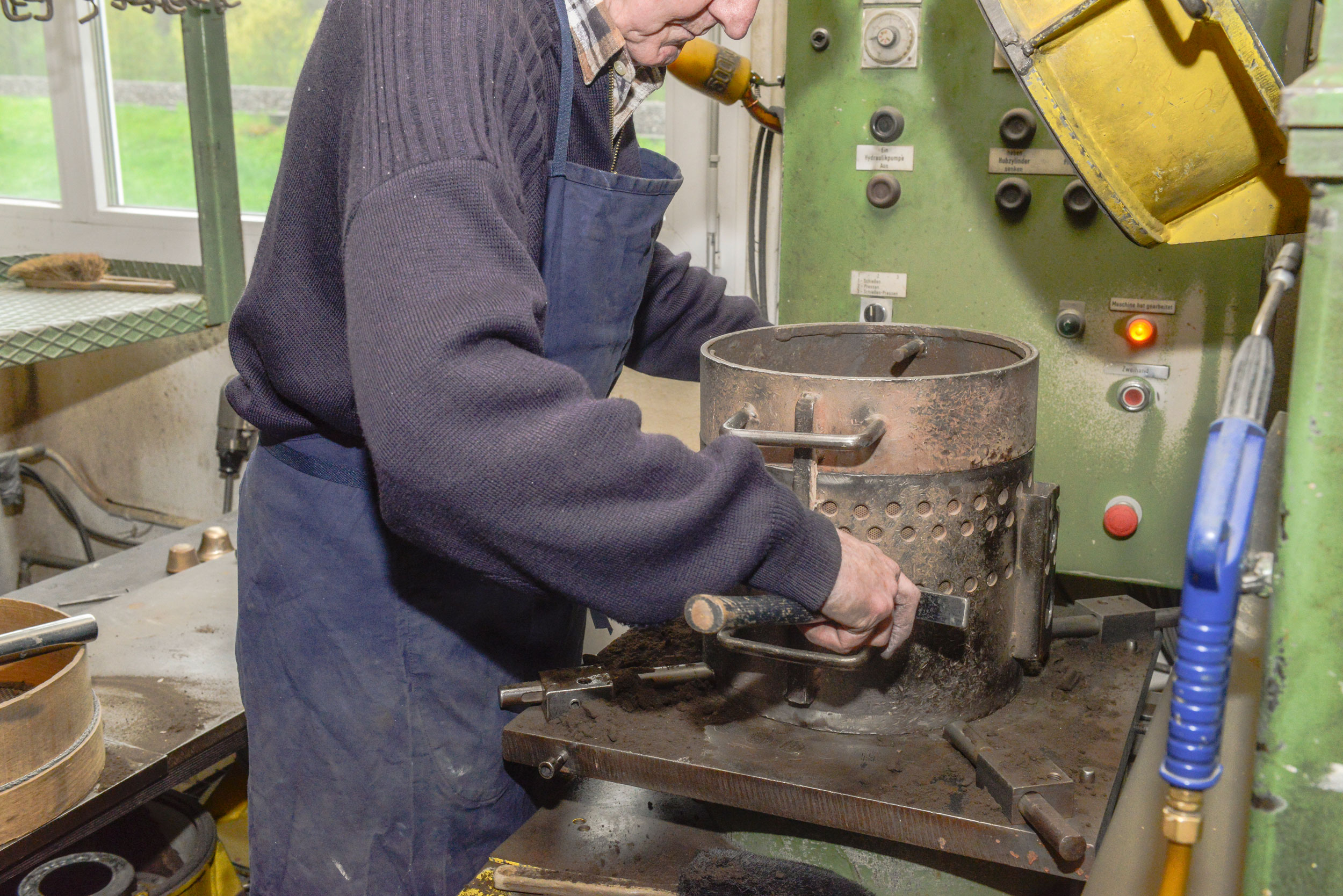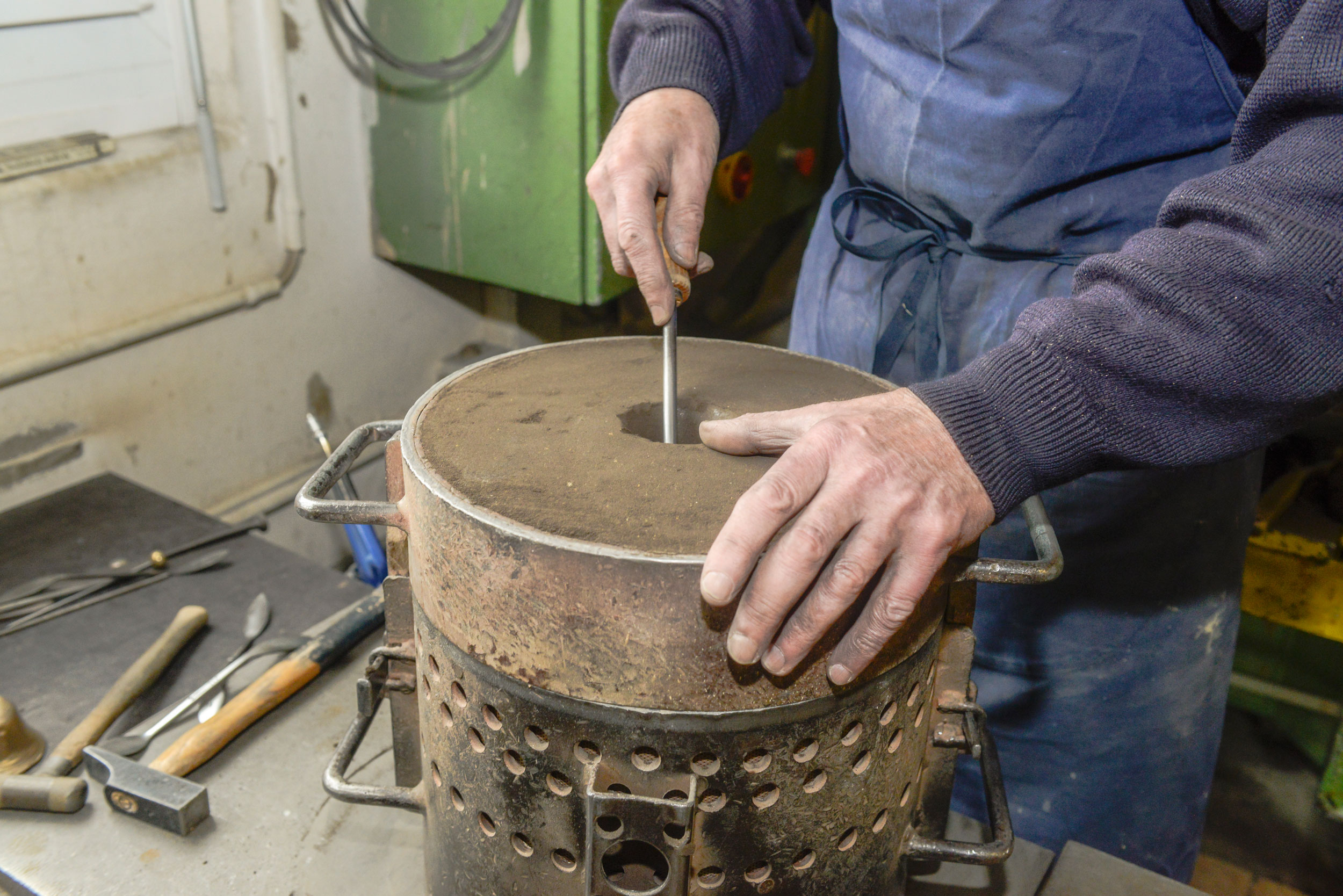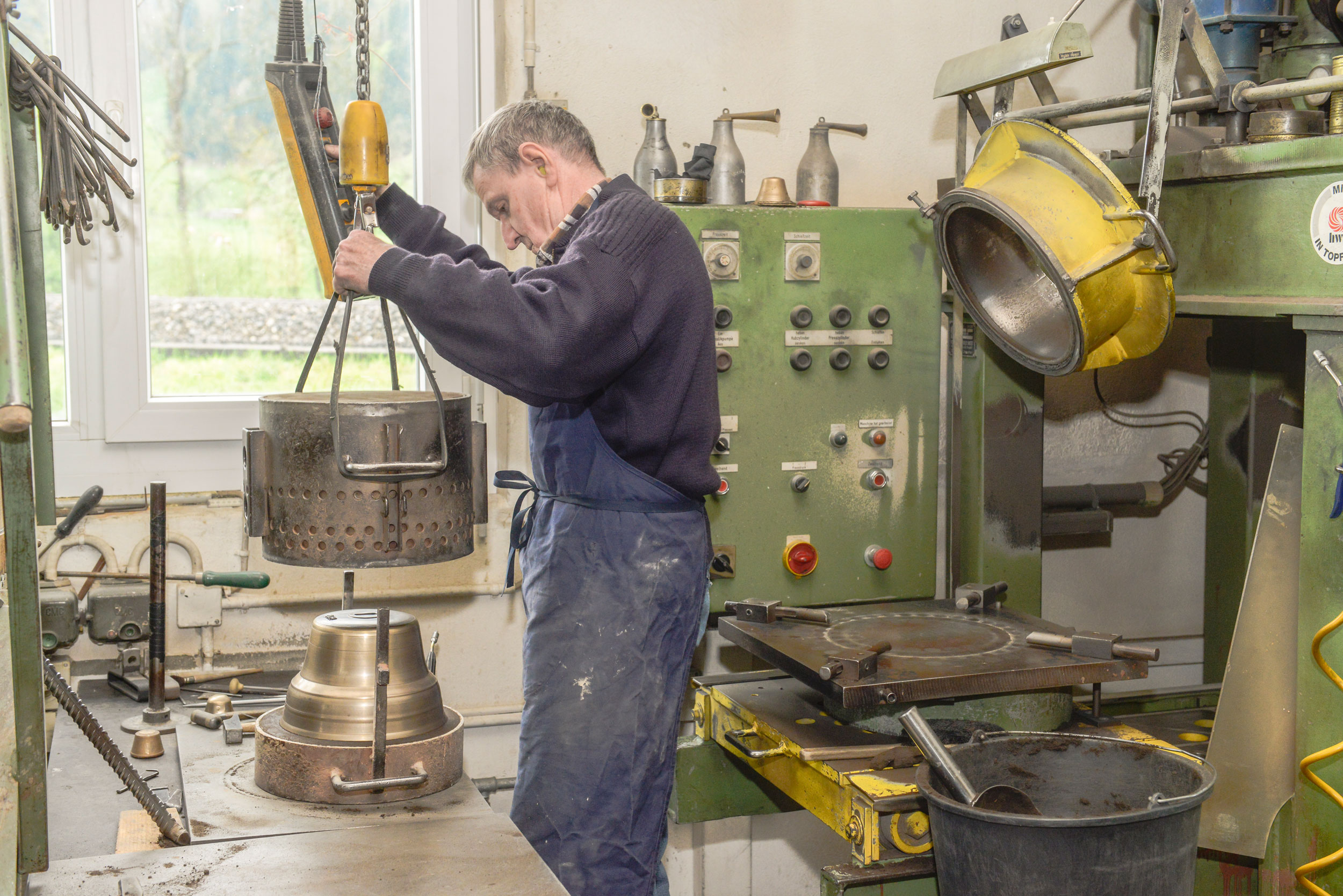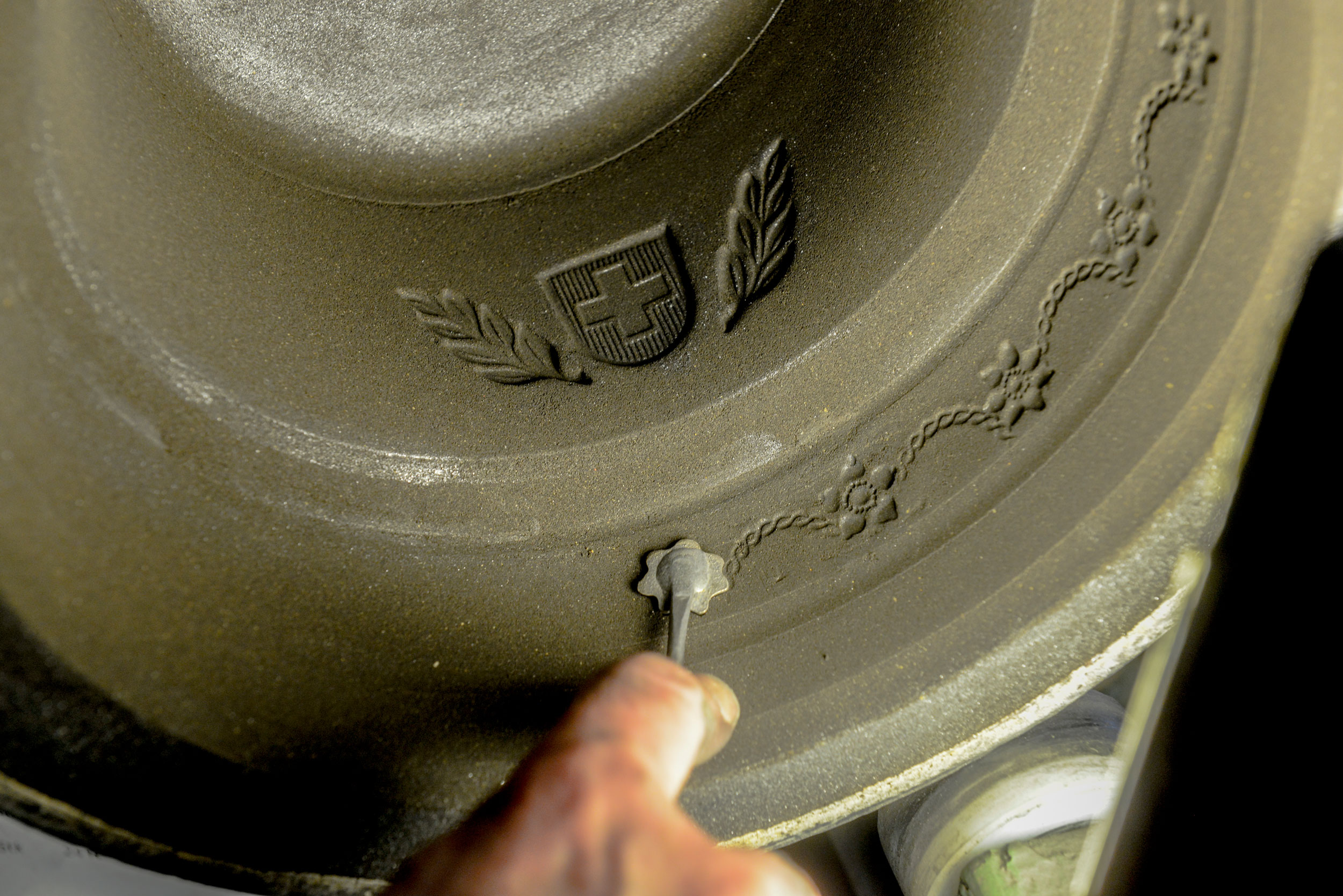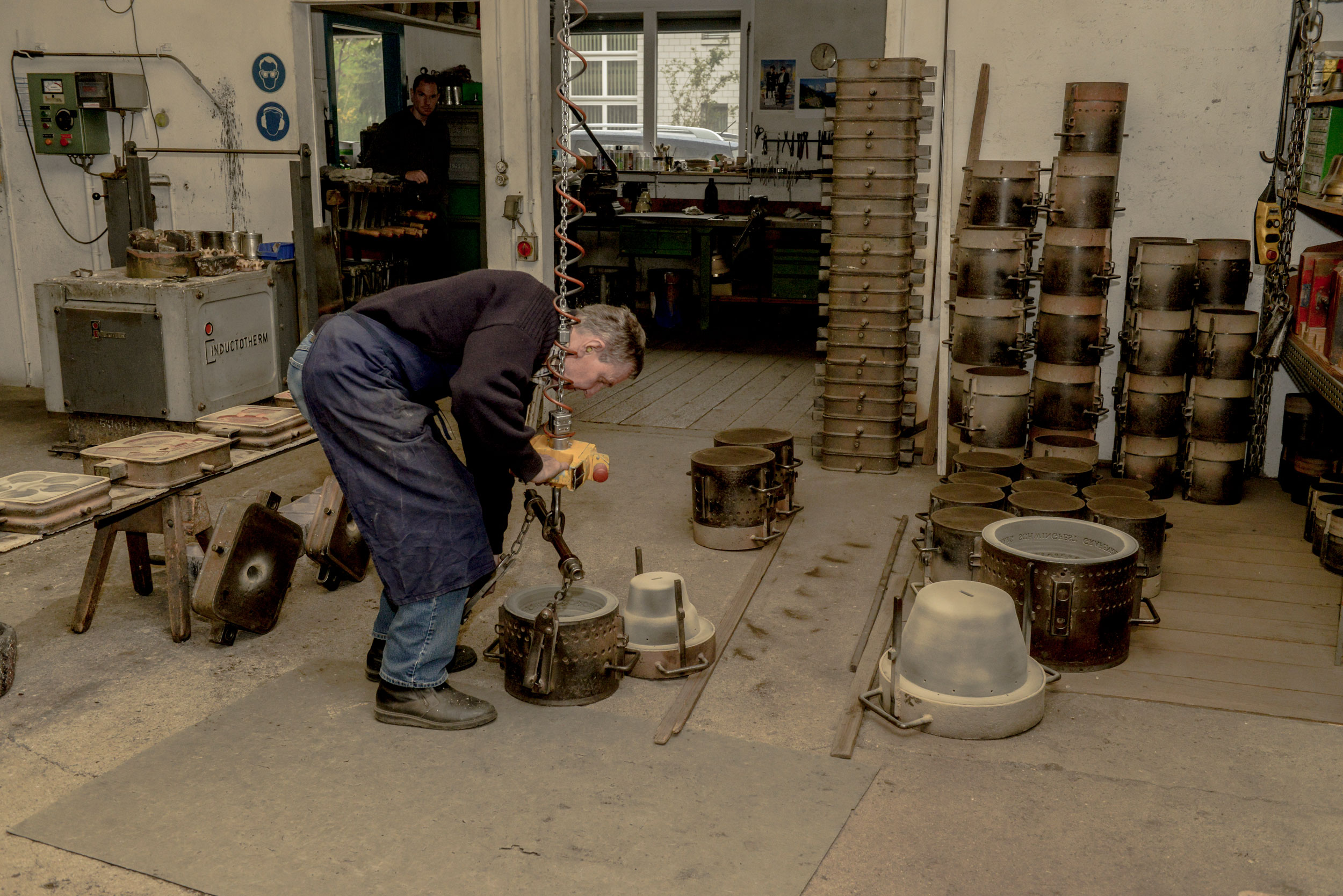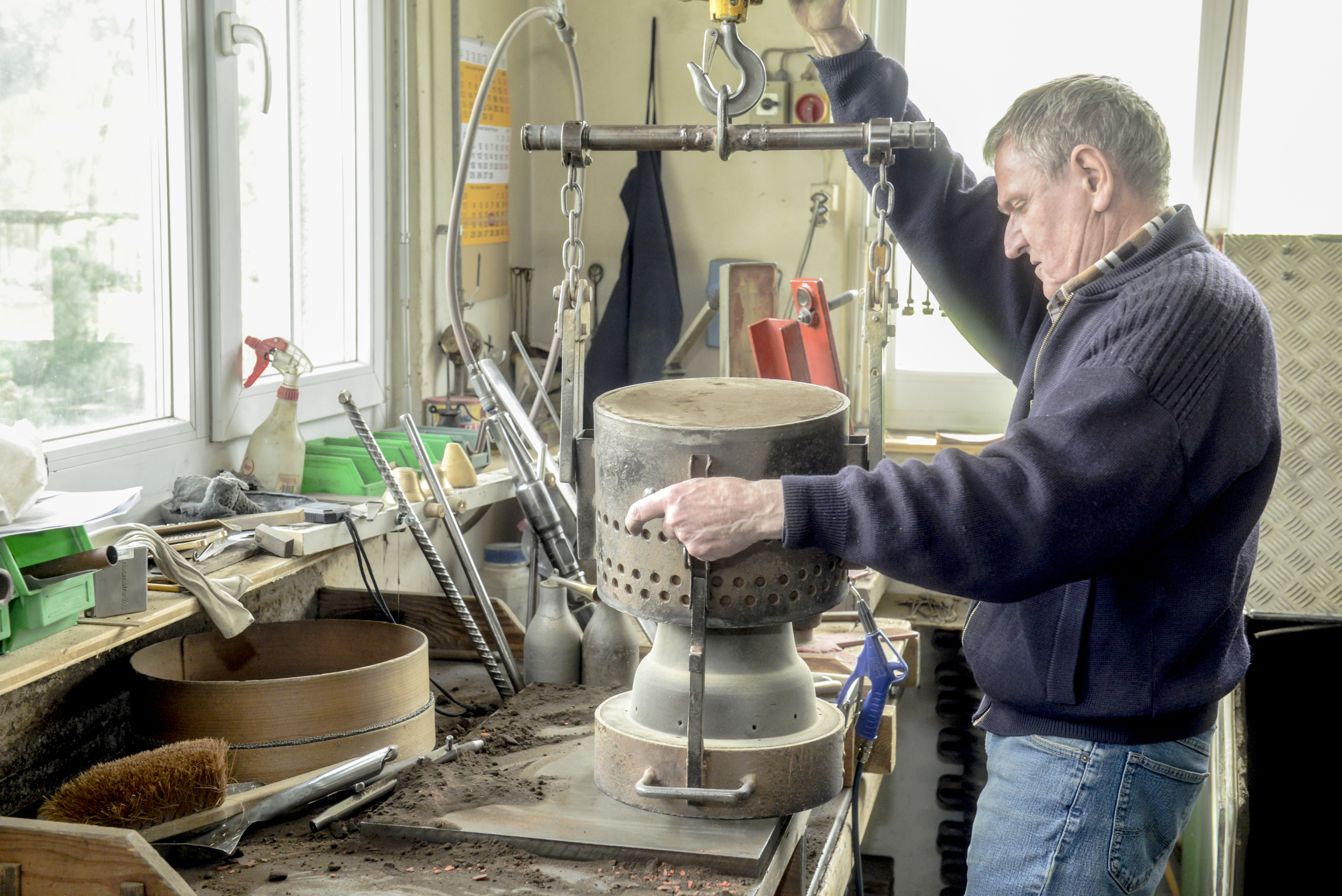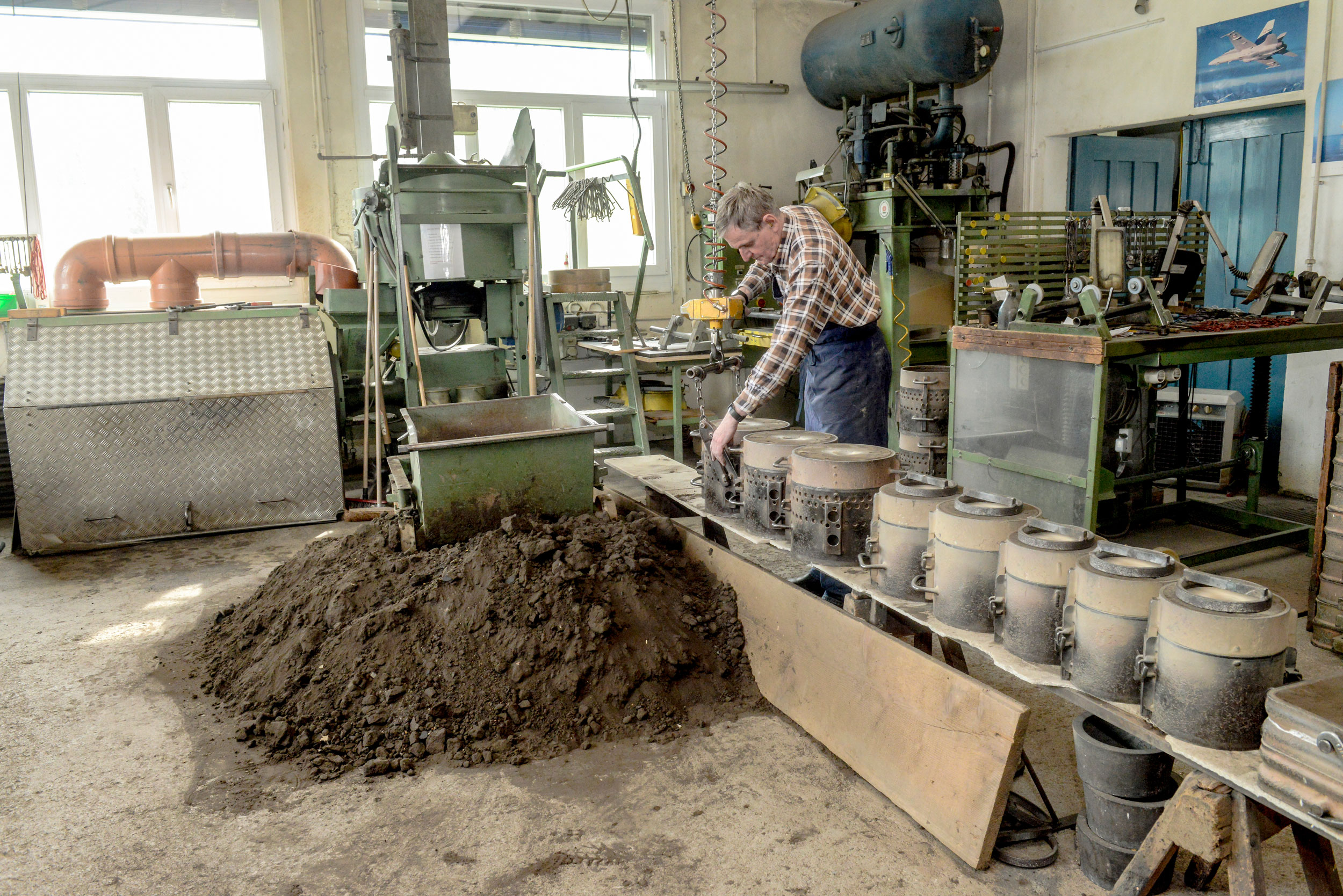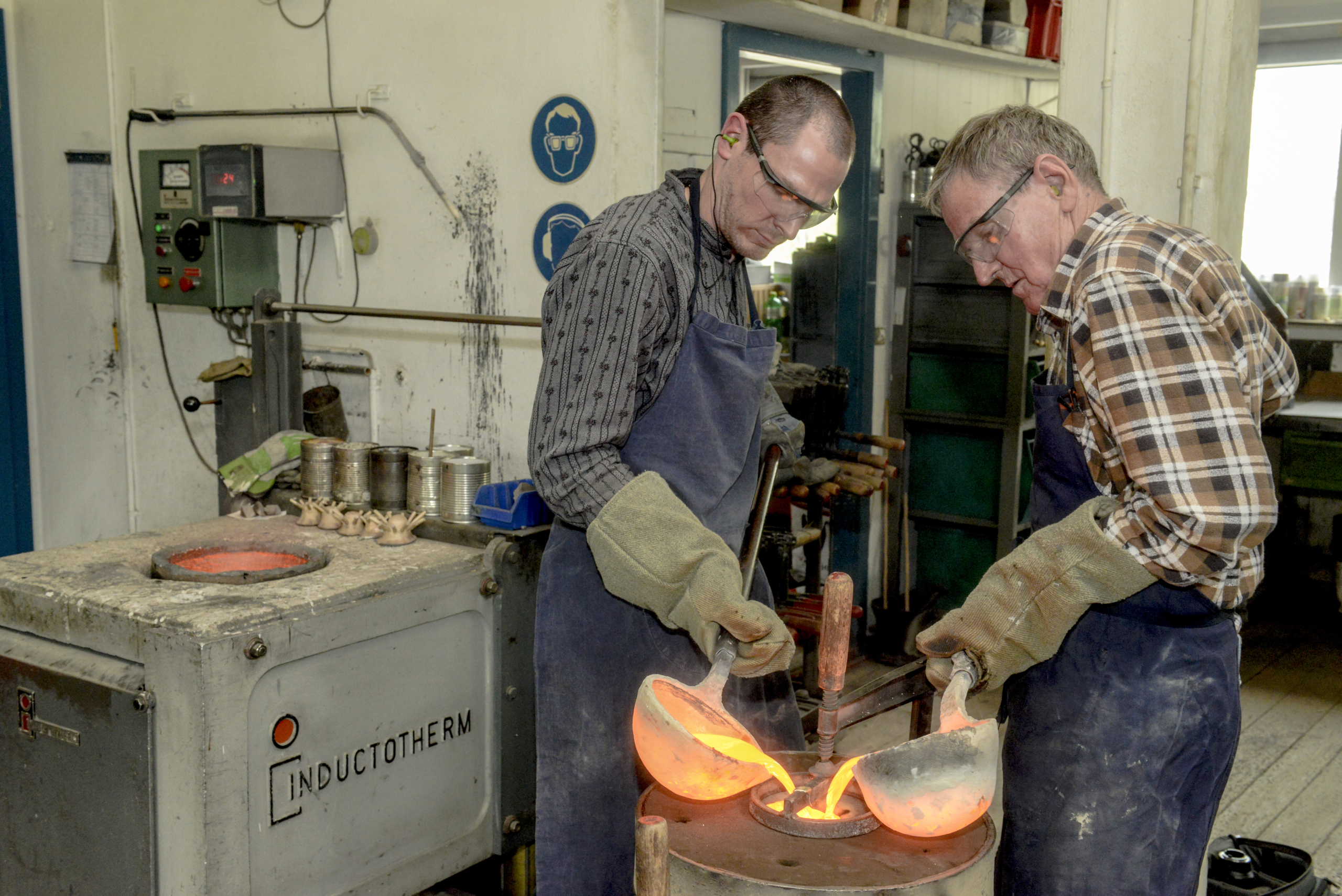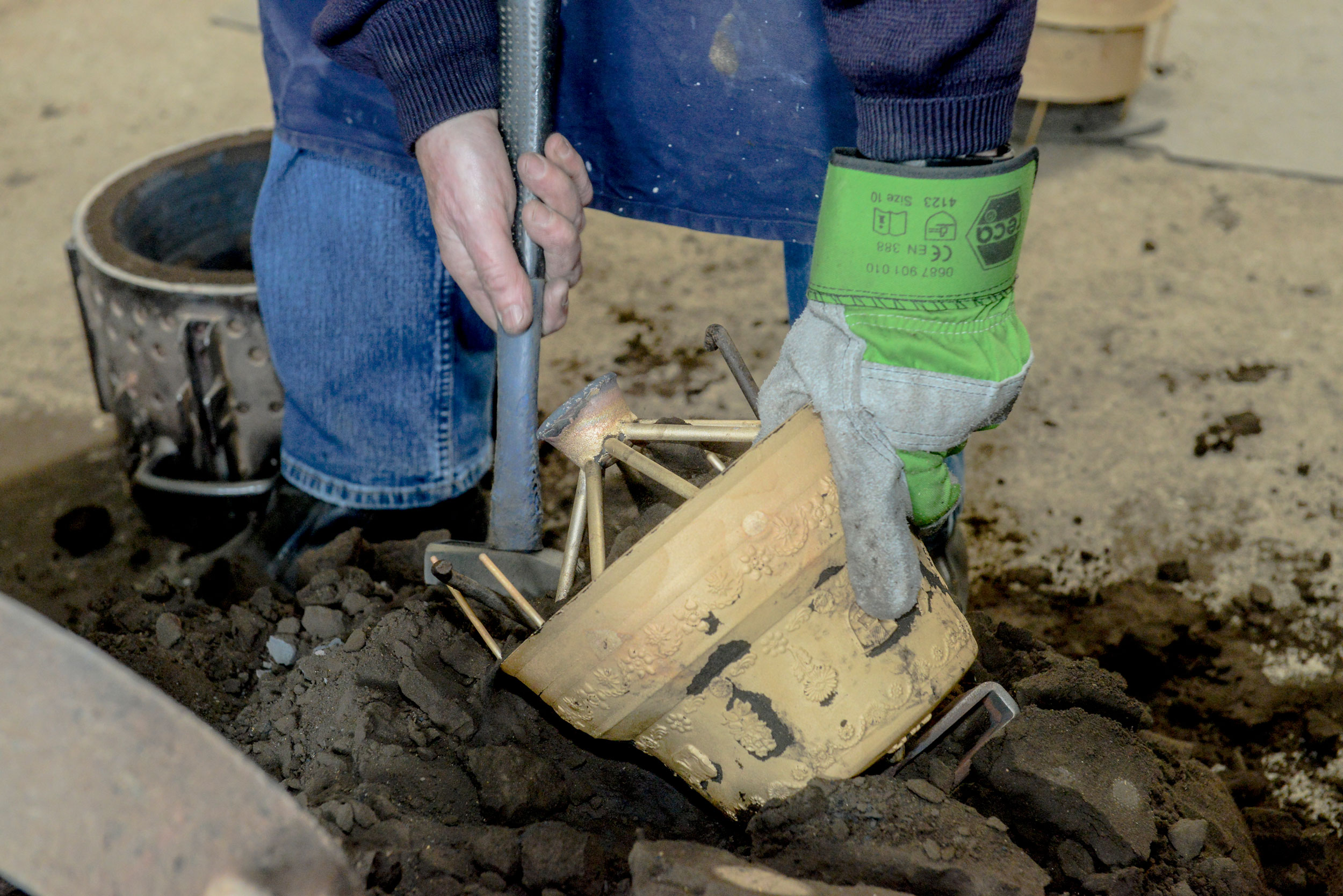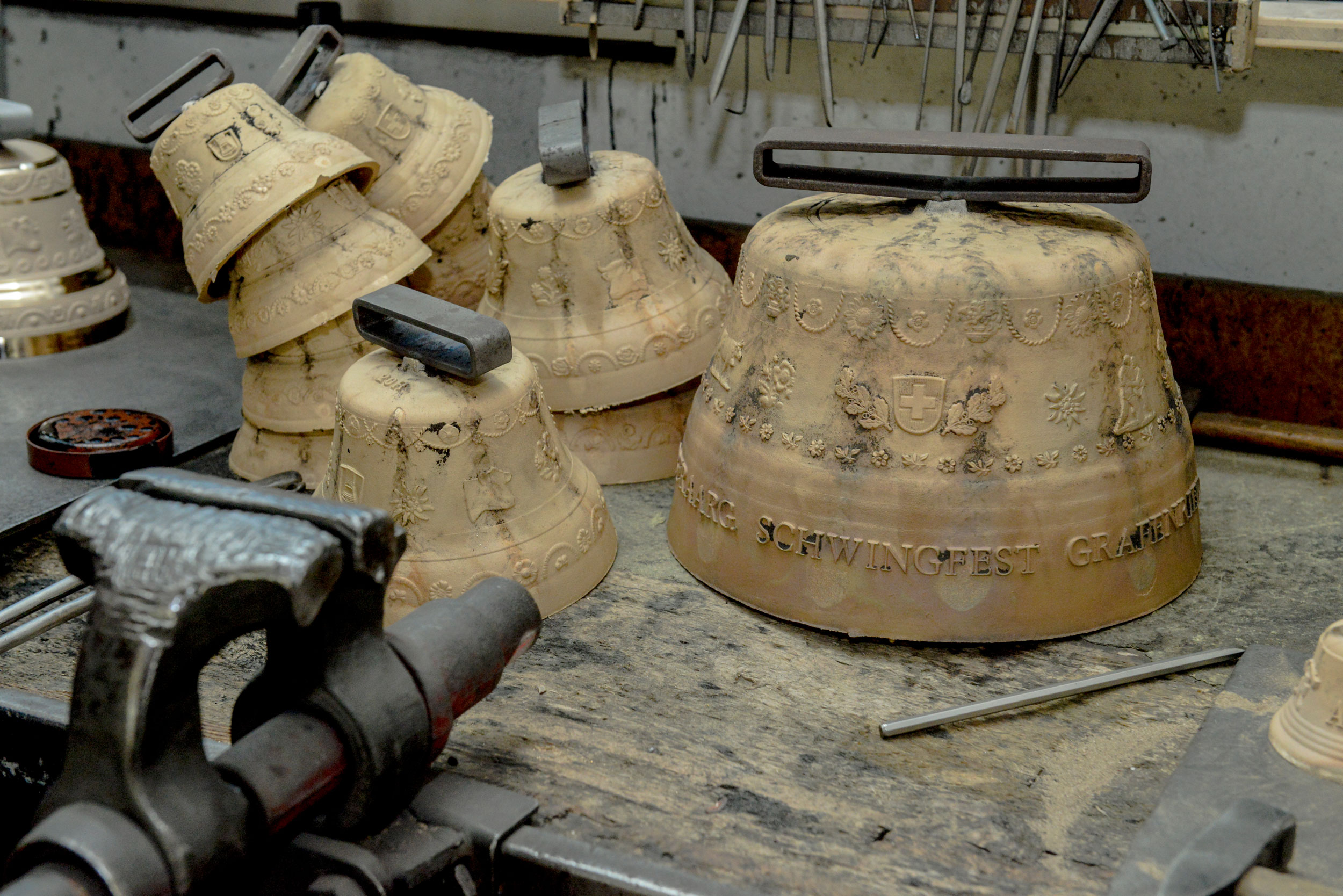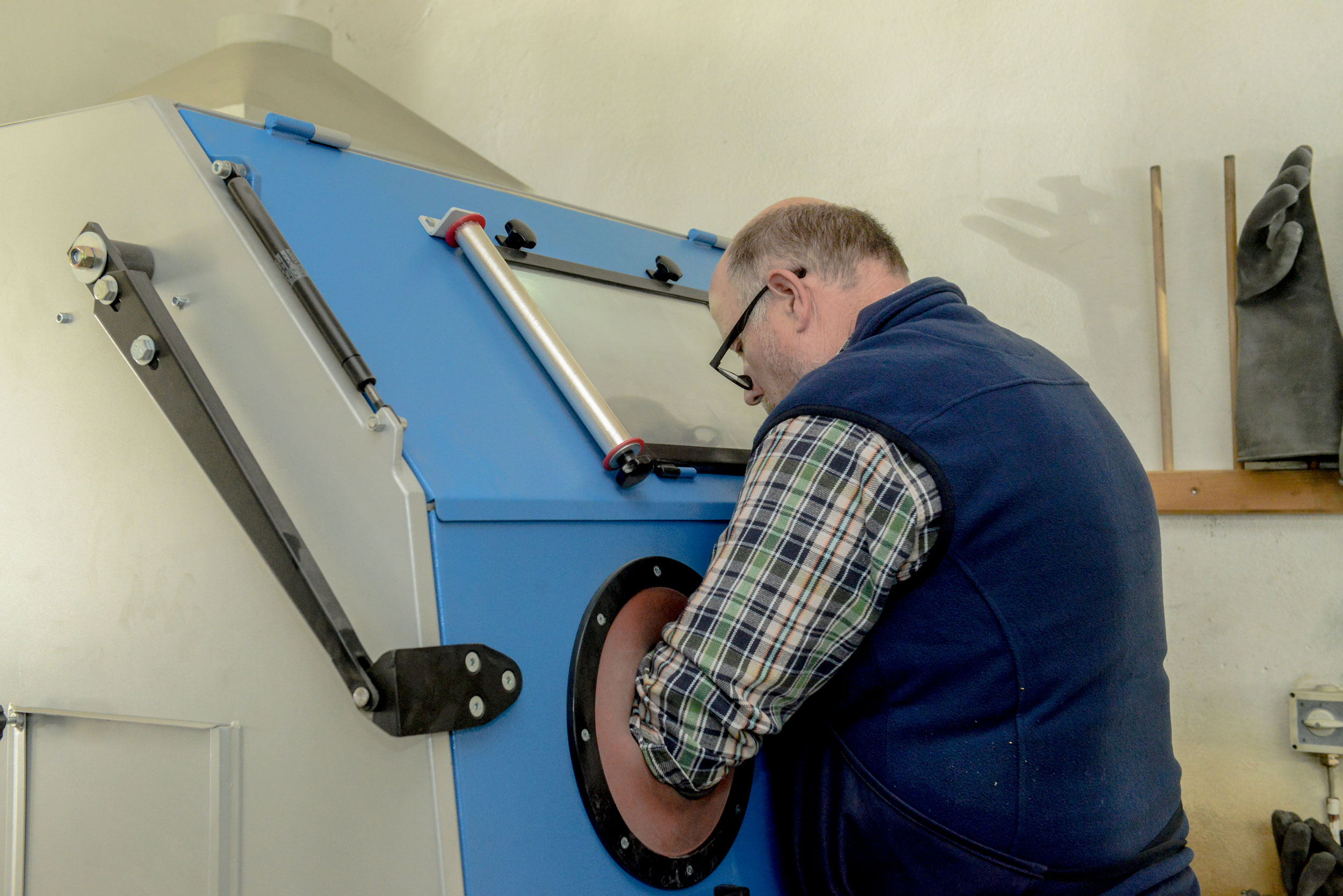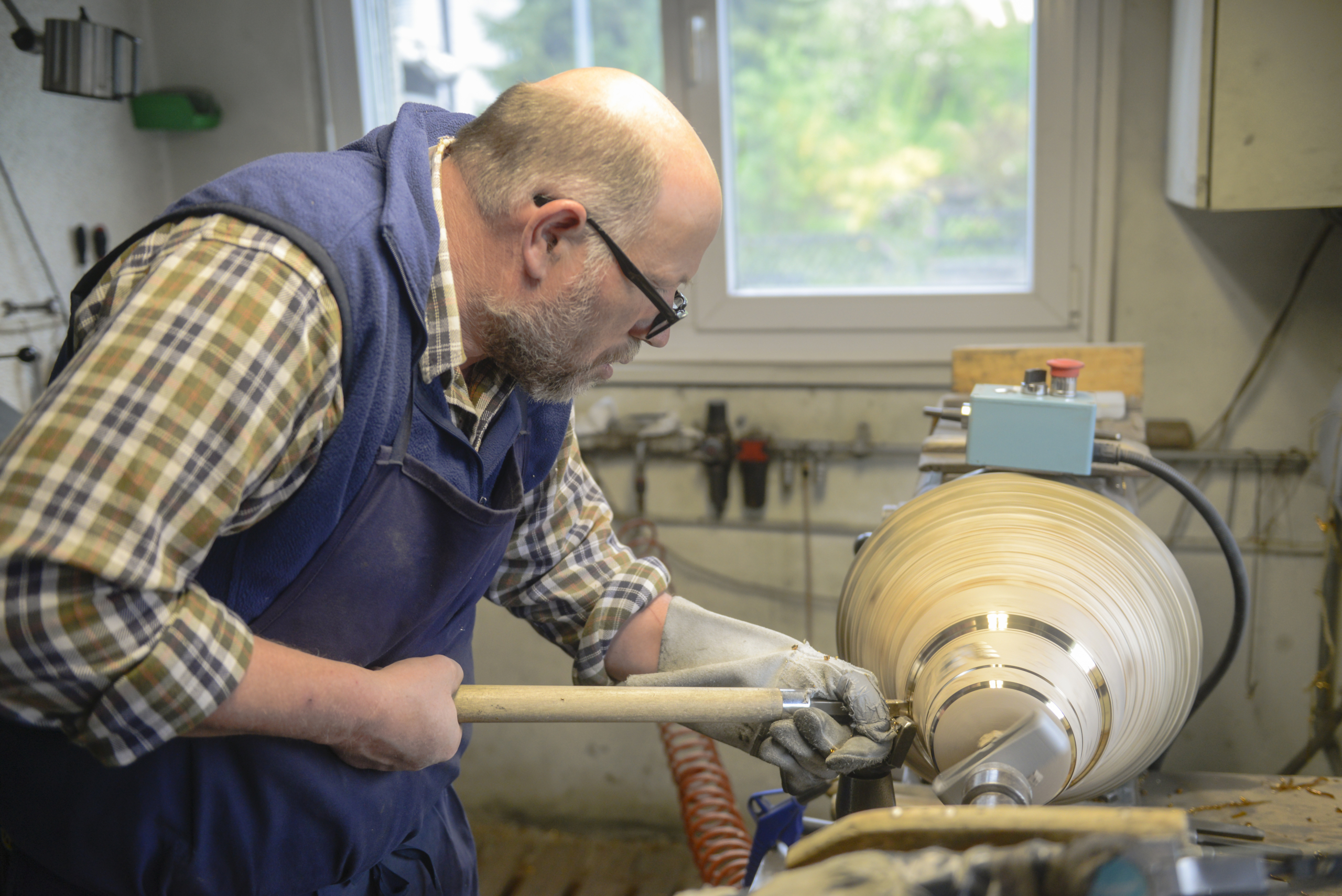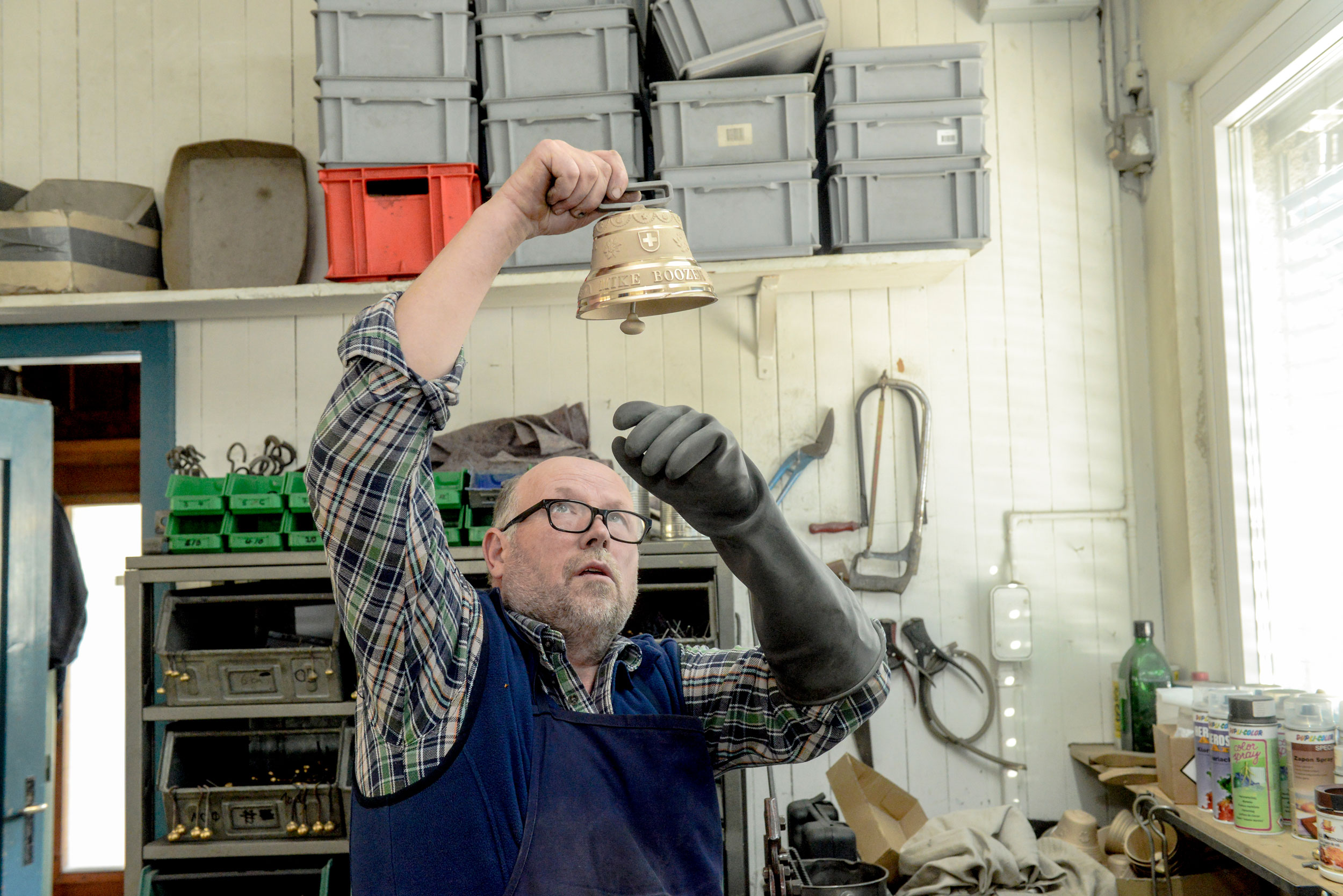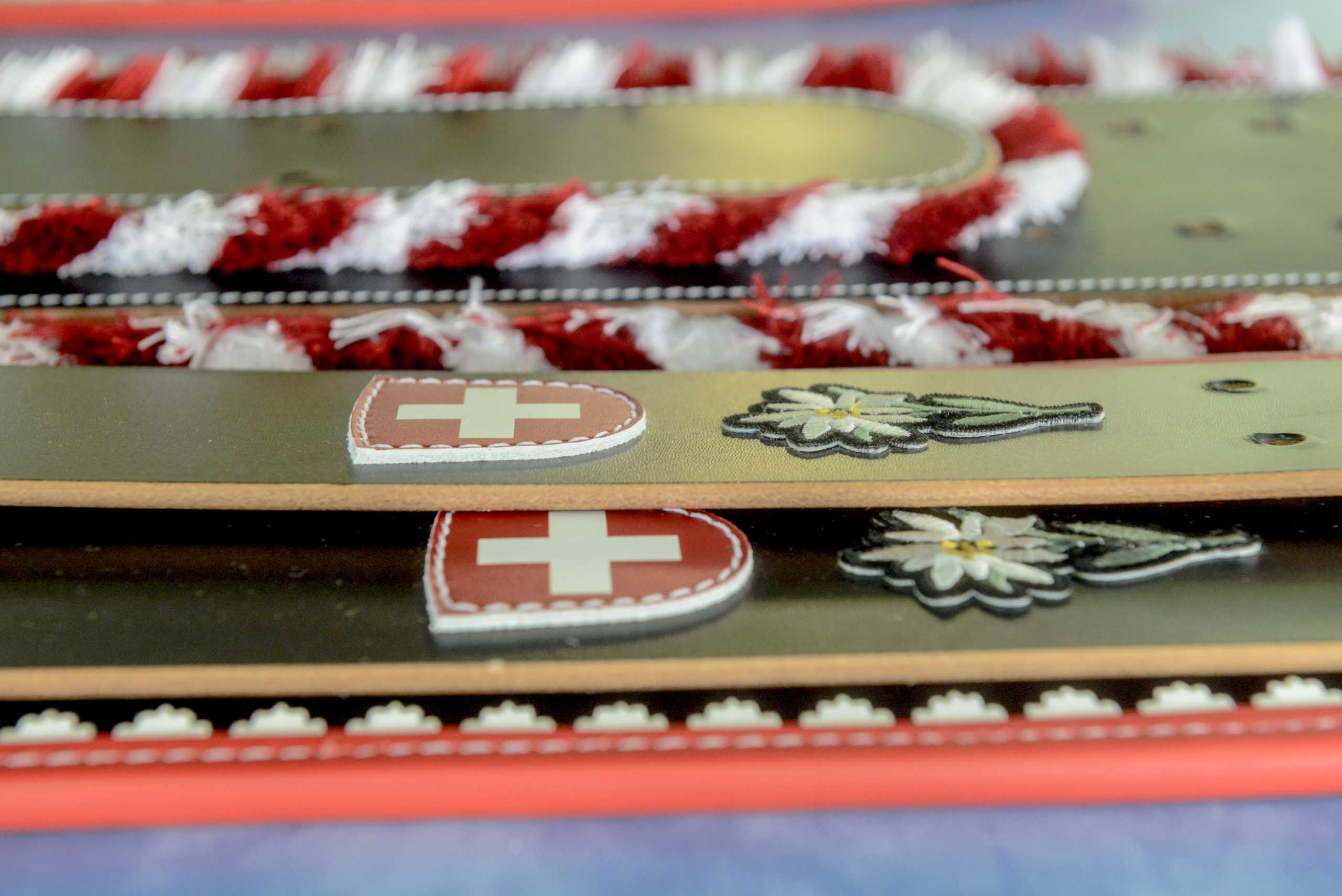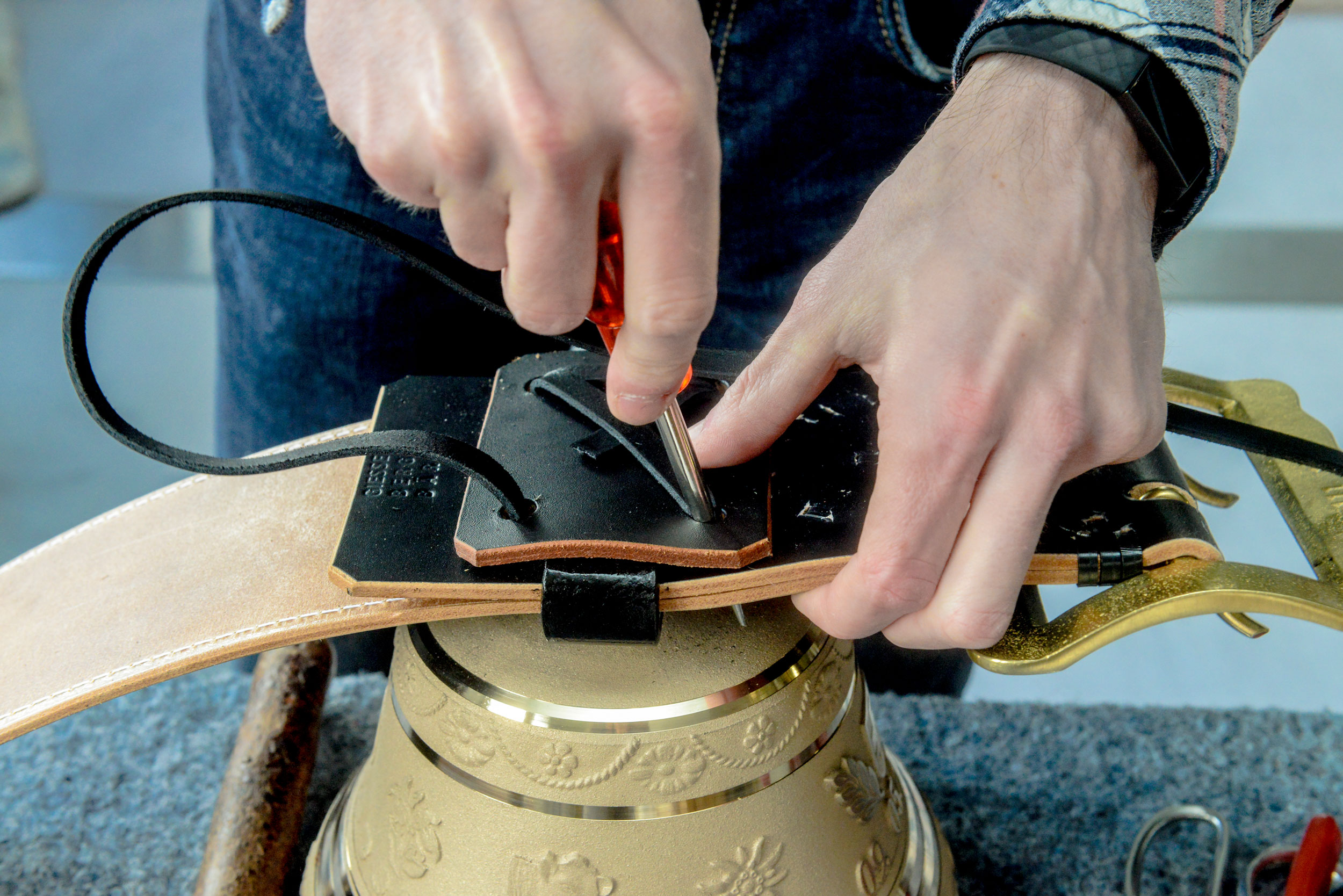Traditional production of cow bells
The secret of bell production. Follow the creation of a Swiss cowbell in the following series of images.
Do you want to know more? Then experience history in the image video. Have fun!
The molding sand – a secret
Everything starts with the careful selection of the required materials, because only first-class components can be used for high-quality cowbells. Even the molding sand needs certain properties in order to be able to withstand the high temperatures of up to 1,100 ° Celsius and at the same time to produce an accurate finish on the surface of the finished bell. The exact recipe of the sand is a well-kept family secret which is only known to the family members of the manufactory and is passed on from generation to generation.
The sand is a yellow natural sand, which consists of 20-22% clay and is mixed with approx. 5% water. The molding sand is reprocessed after each casting in order to guarantee the sustainability of production. Nothing is wasted.
The queen of metal alloys – bronze
Everything stands and falls with the bronze alloy, the queen of all metal alloys for an exceptional sound. For this reason, only bronze from the metal smelting plant is used in production, i.e. the metal has been professionally processed and recycled. Just imagine if unprocessed scrap and scrap metal is used for bells. As a rule, scrap is also produced from scrap if the metal is not processed and cleaned beforehand in professionally set up companies. With bad material, the bell can suddenly lose its sound forever. Worse still, it can contain lead, arsenic and other toxins if the scrap comes from untraceable sources. Only metal that accrues during production is melted down again in the Berger foundry, i.e. where the origin of the material can be traced beyond doubt. Everything else needs to be professionally prepared.
A steel mold, sand and a master model
Let’s start together. The sand mold for the bell is made in a steel mold using a bell model. The steel mold holds the sand together.
It begins – the outer shape
First, the model is placed in the middle of the steel mold. The space between the model and the steel mold is then filled with sand and compacted, creating the so-called jacket. During this step, the belt posture (The “Laetsch”) is formed and aligned.
The core – the inner shape
As the next step, the mold is completely turned over and the two-part steel molding box is closed. Now the core (the inner shape) of the cowbell is made. Reinforcement is used here so that the core does not collapse. The bell will stand upside down when pouring and the reinforcement ensures that everything does not fall apart.
The model is now completely embedded in the steel mold in the molding sand. What is still missing are the pouring channels so that the molten bronze arrives at its destination.
The pouring channels
With great skill, the pouring channels are blindly pierced into the sand mold. There is a lot to consider in this step: Too few channels do not fill the mold evenly with the liquid metal, the ventilation channels must be created precisely, otherwise the air cannot escape and holes will appear, the channels must not be too deep or too high be applied, etc., etc., etc.
Removing the bell model
The bell model is still trapped in the sand. So now the two-part mold is opened again to remove the model. Once the model is removed, the sand mold is ready to be labeled and decorated.
Labeling and decorating – an art in itself
The lettering and decoration of the cowbell is made 100% by hand. Imagine there are over 2,500 characters and letters, some of which are over 200 years old and are used every day. Each character and each letter are inserted individually into the bell shape. This means that every single bell, no matter whether it is no 5 or no 36, is a one-of-a-kind, specially made for you.
Corresponding decorations are available for a wide variety of occasions: For weddings, swing festivals, fire brigades, sports festivals, etc. And should something be missing, these can be manufactured accordingly. Logos, coats of arms or special fonts can also be produced for you on request. You see: (Almost) no wish remains unfulfilled.
Solidify molding sand
After the decoration, the shape is hardened by means of a plain so that the bell shape is retained and the sand does not collapse. The strength is to be found in serenity. The mold must now rest so that the water present in the size can evaporate. Otherwise, a highly explosive gas is created during casting, which is rather unhealthy and can cause devastating damage to people and material.
The wedding
The caster describes the final connection of the bell shape as a wedding. After closing, the mold is closed with clamps to counteract the enormous casting forces. Now the finished bell shape is transported to the casting track and prepared for casting.
The casting line
Now the bells are done and ready to be poured. Respectively in the form there is currently air instead of the bell, i.e. «nothing».
The pouring of the cowbell
The time has finally come: with «Glueck auf!», The traditional foundry greeting, the hot part of bell production starts.
Casting with 1,100 ° hot bronze is the highlight every day, even after many years in the foundry: fire, liquid metal, earth (sand), steel. The tension rises: is the metal correctly alloyed? Is the color of the molten bronze right? Is the temperature right? Final corrections and then it’s serious: something new is created out of air, your very own cowbell, a piece of Swiss craftsmanship from the Emmental.
A casting of a cowbell
This is what it looks like inside the sand mold during casting.
The forms must rest again
After casting, the molds have to cool down first. This is done overnight so that the bells can be processed the next day. It is not yet clear whether all of the cowbells were really successful. Because even after almost 290 years of experience, something can always go wrong. Casting is still a craft in itself, despite all the technical advances.
Unpacking the bells – the birth
Now it’s getting exciting: The birth of the bell. Was all the effort the day before for the cat? Or did the casting succeed? The cast bells are roughly freed of sand when they are unpacked and subjected to an initial inspection. The sprues and air pipes are knocked off and melted down again on the same day.
Cowbells in their raw state
Now the sand is gone. Are the bells all okay? No holes? Are the fonts easy to read? Are there any spelling mistakes? After the first visual inspection, the first quality control takes place. One of many.
Cleaning the bronze bells – sandblasting
Off to the sandblasting cabin! Now the bells are freed from the sand and get their beautiful surface. The composition of the abrasive is based on years of experience. The same applies here: a secret of the foundry.
The strips – the lathe
First, the fonts and the coats of arms or logos are sanded so that they get their shine. With a lot of skill and experience, the characteristic stripes are then made on the bells. No CNC, no computer, everything is handmade. The “lathe operator” turns the relevant parts off with his experience. He sees the finished bell in front of him even before the start of the work step. A difficult step for which there are specially talented people.
Final check
The strap loop, bracket or handle is painted with a protective paint and the kallen, haller or clapper is used. The big moment: For the first time in the life of a finished cowbell, the tone sounds. The sound of a bell means: protection and happiness. Everyone who hears the sound of a bell is in luck. What a nice gift!
The strap for the cowbell
Hand on heart: Without a matching bell strap, it’s only half a cowbell. Regardless of whether it is an embroidered, carved or a plain black strap, you can get everything your heart desires from the in-house saddlery. Bells with elaborately embroidered bell straps, lovingly hand-carved bell straps or simple bell straps, there is something for your taste. Of course, you will also receive your own personal strap. Engravings or writings embroidered and carved are also possible. There are (almost) no limits to your imagination.
Get together
The strap is tied to the bell or bell by hand and threaded into the bell loop or buckle. Now the bell is complete and can be hung in its usual place. Have fun with this piece of traditional craftsmanship.


